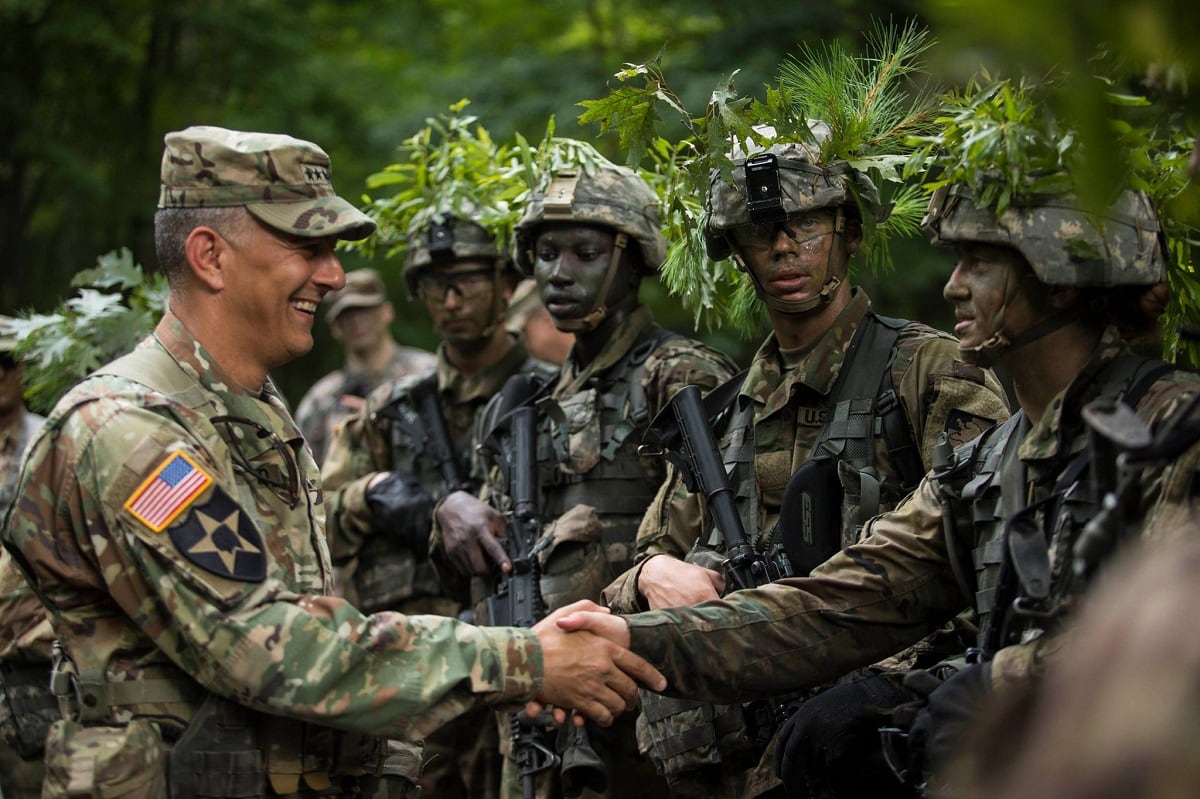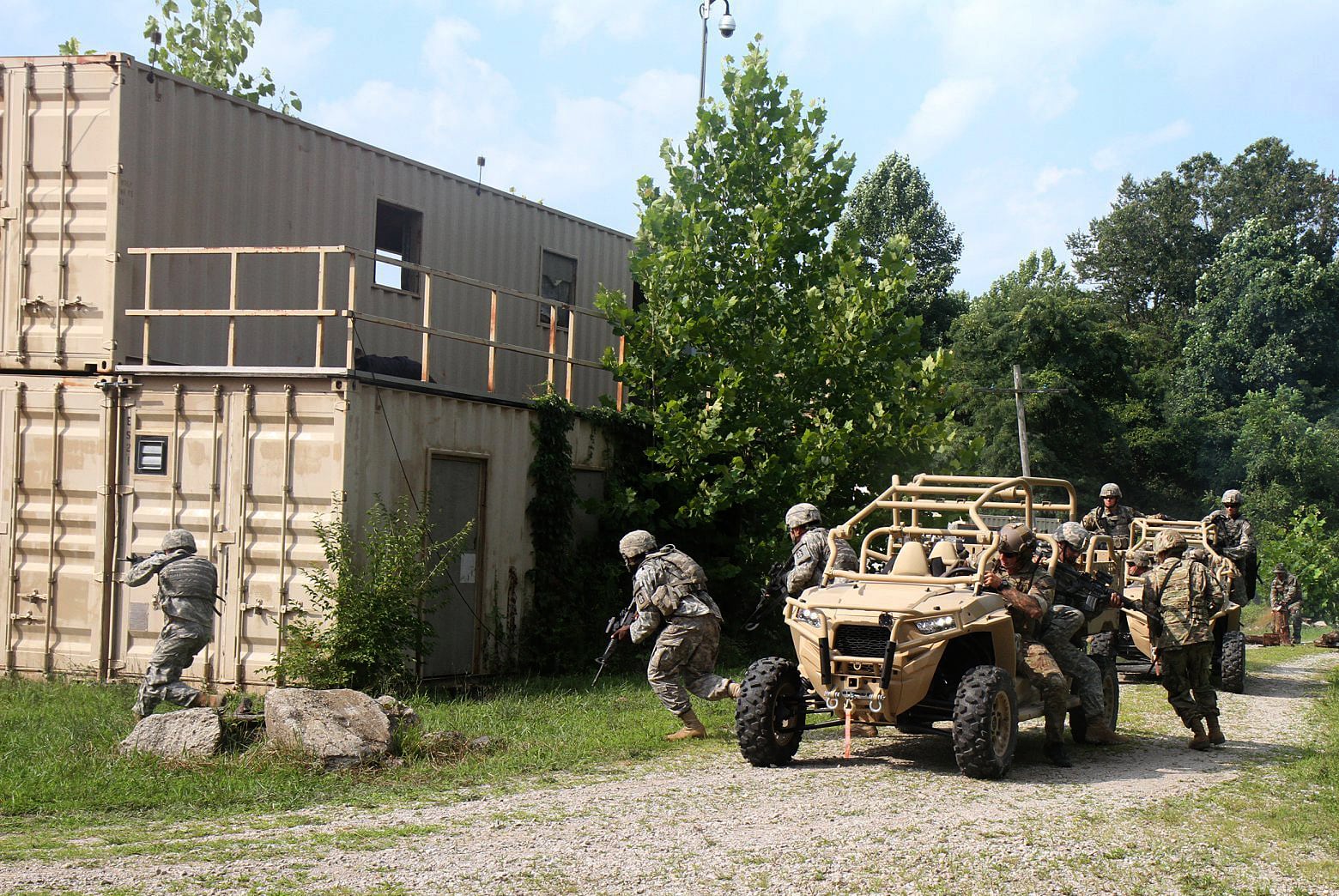The way the Army fights its future battles will require formations geared toward multi-domain operations and driven by real-world threats to U.S. global military superiority, according to an updated version of Army warfighting called Multi-Domain Operations 2028.
What began two years ago as Multi-Domain Battle has evolved into Multi-Domain Operations primarily because much of the work the Army will have to do is in the below-the-threshold or “gray zone” shaping of both competition with near-peer adversaries such as Russia and China and outright combat at varying levels.
The new document, “U.S. Army in Multi-Domain Operations 2028,” released Thursday, is both a revision to ongoing warfighting plans and an invitation for input from across the force.
“The American way of war must evolve and adapt,” Army Chief of Staff Gen. Mark Milley wrote in the foreword of the concept. “It describes how U.S. Army forces, as part of the Joint Force, will militarily compete, penetrate, disintegrate, and exploit our adversaries in the future.”
And while it has been shepherded by past and current commanders of the Army’s Training and Doctrine Command, they’re looking for ways to improve it.
“Every one of you is part of our evolution and the construction of our future force,” Milley wrote, “and we want your critical feedback.”
The main task of this new battle concept is to get after “layered stand-off,” in which adversaries have created ways to deny historical U.S. dominance of domains such as air, land and sea, and new ones such as information and electromagnetic spectrums to keep U.S. and allied military units at bay.
Gen. Stephen Townsend, TRADOC commander, zeroed in on the ramifications of how the Army will operate and enable the joint force in future conflicts in the document’s preface.
“If deterrence fails, Army formations, operating as part of the Joint Force, penetrate and disintegrate enemy anti-access and area denial systems; exploit the resulting freedom of maneuver to defeat enemy systems, formations and objectives and to achieve our own strategic objectives; and consolidate gains to force a return to competition on terms more favorable to the U.S., our allies and partners,” he wrote.
Those 61 words cover a large territory within the evolving Army doctrine, set to replace the warfighting concept that have been central to the force for at least two generations known as Air Land Battle.
RELATED

Townsend dissects portions of the changing concept in his writings as well, noting that, “calibrated force posture combines position and the ability to maneuver across strategic distances. Multi-domain formations possess the capacity, endurance and capability to access and employ capabilities across all domains to pose multiple and compounding dilemmas on the adversary.
"Convergence achieves the rapid and continuous integration of all domains across time, space and capabilities to overmatch the enemy.”
Mission command and disciplined initiative at all levels undergird those tenets, he wrote.
Those goals will require some new functions, new equipment and advanced processes to select, train and retain capable soldiers.
Some of that was evident this past summer in the Pacific theater, where fires soldiers found novel approaches to integrating traditionally land-focused Army assets and networks to link up with partner forces and U.S. Navy and Marine Corps teams to share information and strike ships at sea in simulated, contested environments.
The director of the Army’s Capabilities Integration Center, Brig. Gen. Mark Odom, in an Army release, highlighted key factors in the new concept’s importance.
The concept focuses on operational problems with competitors such as Russia and China, as opposed to the counterinsurgency and counterterrorism focus in recent decades.
Meaning it returns the Army to a focus on threats rather than capabilities-based approaches, he wrote.
It also is a joint, top-down approach to develop solutions. And it aims experimentation and modernization efforts in a single direction.
To read the full Multi-Domain concept, go to the TRADOC website here.
Todd South has written about crime, courts, government and the military for multiple publications since 2004 and was named a 2014 Pulitzer finalist for a co-written project on witness intimidation. Todd is a Marine veteran of the Iraq War.




